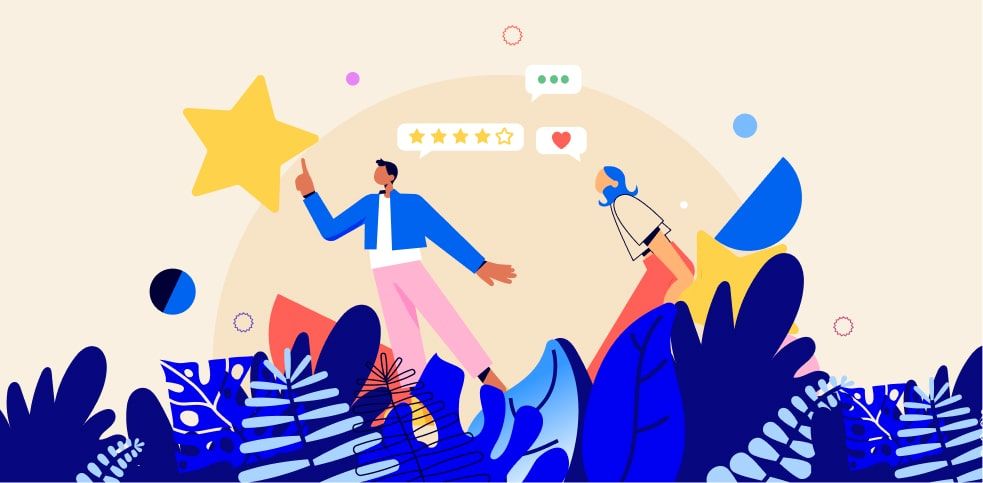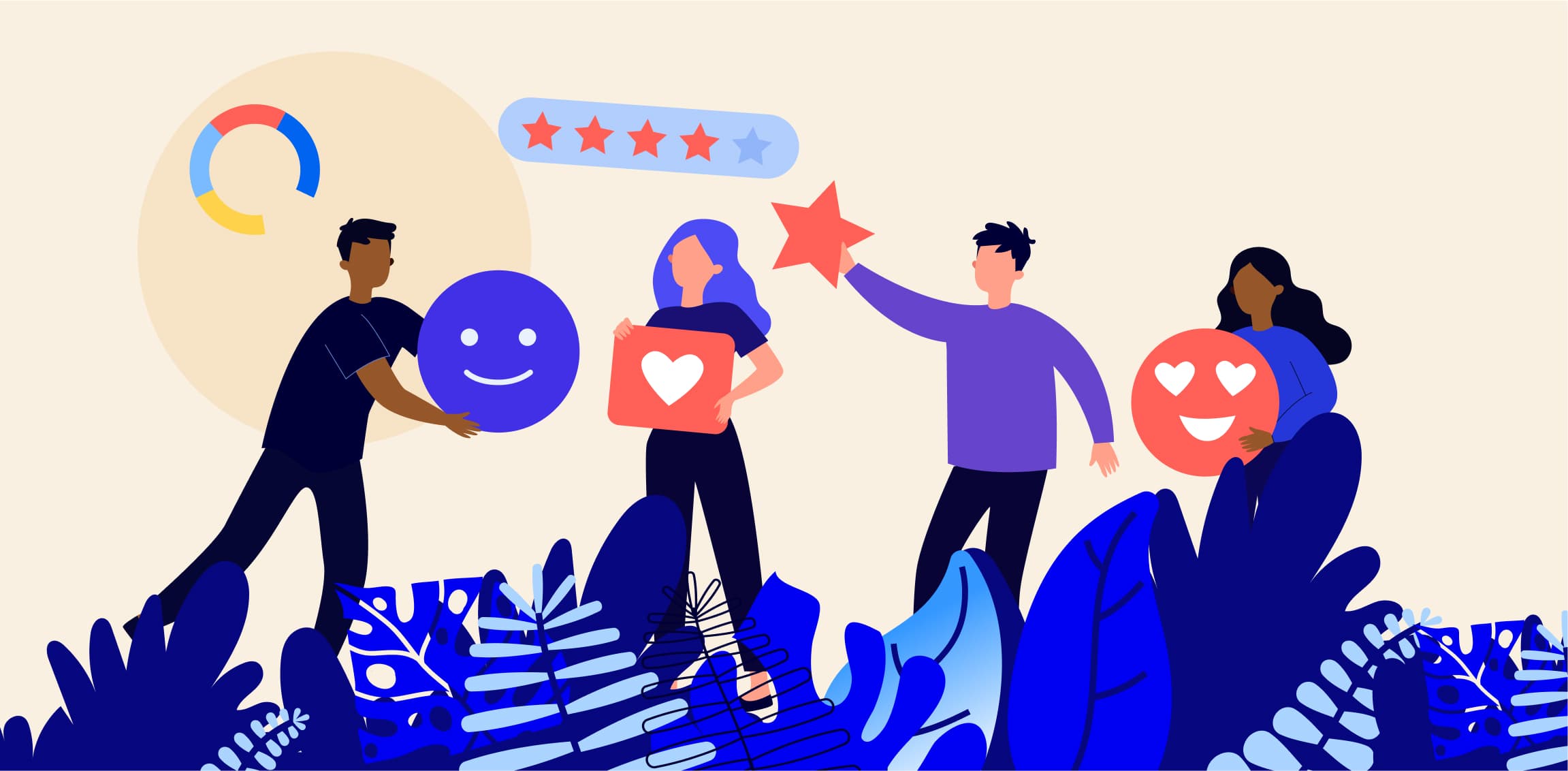How to Create Accessible Student Surveys That Meet Higher Education Accessibility Standards

In the fast-paced digital campus environment, student feedback is your institutional goldmine. But what if you're accidentally putting up a velvet rope around that goldmine, keeping out students who have every right to contribute?
Spoiler alert: If your surveys aren't accessible, that's exactly what's happening. According to a study by the National Center for Education Statistics, approximately 21% of undergraduate students report having a disability.
This article will first explore what eAccessibility truly means in higher education and examine the regulatory frameworks you need to be aware of. It’ll also offer practical strategies for designing accessible surveys, from selecting the right platforms to crafting inclusive questions.
Understanding eAccessibility and Accessibility Regulations in Higher Education
Picture this: A student sits down to complete your carefully crafted course evaluation, only to discover they literally can't. Not because they don't want to, but because the digital tools you've chosen have effectively hung a "not welcome" sign for users with disabilities.
eAccessibility in higher education isn't just another buzzword to add to your institutional bingo card—it's the fundamental principle that digital content and tools should be usable by every student, regardless of their abilities or disabilities.
Why does this matter? Beyond the obvious ethical implications, there's the not-so-small matter of legal compliance. Universities that ignore accessibility regulations aren't only excluding students, but they're also potentially setting themselves up for legal consequences.
The bottom line is that universities must ensure all digital tools, particularly student surveys and course evaluations, are accessible to everyone. It's an essential component of every campus experience.
What is eAccessibility?
eAccessibility refers to the design and implementation of digital technologies, such as student portals, course evaluations, and general surveys, in a manner that enables people with diverse abilities to perceive, understand, navigate, and interact with them effectively.
This breaks down into several categories:
- Visual accessibility: Making content usable for people who are blind, visually impaired, or colorblind
- Auditory accessibility: Ensuring content works for those who are deaf or hard of hearing
- Cognitive accessibility: Designing interfaces that are navigable for people with learning disabilities or cognitive differences
- Motor accessibility: Creating systems that people with limited mobility or dexterity can operate
In the university context, this applies directly to the digital systems students interact with daily, including those seemingly simple survey forms. When these tools aren't accessible, you're shutting out certain voices and losing that feedback. And in education, every voice matters.
Overview of Accessibility Regulations Relevant to Higher Education
Let's cut through the legal jargon and get to the regulations that matter for your institution. Because nothing says "fun administrative meeting" like discussing compliance frameworks, right?
Understanding ADA and Section 508 for University Surveys
In the U.S., two major legislative frameworks govern digital accessibility in higher education:
- Americans with Disabilities Act (ADA) Titles II & III: Enacted in 1990, the ADA does not explicitly mention websites or digital tools. However, courts have consistently interpreted the ADA to require that digital services be accessible to individuals with disabilities. This applies to both public (Title II) and private (Title III) institutions.
- Section 508 of the Rehabilitation Act: Requires federal agencies and organizations receiving federal funding to make their electronic and information technology accessible to people with disabilities.
- Accessibility regulations in U.S. higher education are also outlined by the Department of Education.
Global Accessibility Regulations and Their Impact on Higher Ed Institutions
If your institution has an international presence, you'll need to consider:
- Web Content Accessibility Guidelines (WCAG) 2.1: The gold standard for web accessibility worldwide, developed by the World Wide Web Consortium (W3C). Most legal frameworks reference these guidelines as their technical standard.
- EN 301 549 (Europe): European standards for accessibility requirements for Information and Communication Technology (ICT) products and services.
- Accessibility for Ontarians with Disabilities Act (AODA): Important for institutions with connections to Canada.
The consequences of non-compliance aren't theoretical. Several high-profile universities have faced lawsuits over inaccessible digital content. These cases resulted in multi-million-dollar settlements, not to mention the reputational damage.
Proactive compliance rather than reactive damage control is your best bet.
The Role of eAccessibility in Student Feedback Mechanisms
Accessible form design practices aren’t just administrative box-ticking exercises. They're critical components of academic quality assurance. They influence faculty promotion decisions, curriculum development, and ultimately the educational experience your institution provides.
When these tools aren't accessible, you're systematically excluding specific student perspectives from your decision-making processes. If students with disabilities can't complete your surveys, how can you claim your improvement initiatives represent the entire student body?
The Link Between eAccessibility and Student Voice in Higher Ed
The concept of "student voice" has become increasingly central to quality frameworks in higher education. By ensuring survey accessibility, you're going beyond simply complying with regulations—you're honoring your commitment to inclusive excellence and authentic representation.
Accessible surveys reflect an institutional commitment to valuing the input of every student. And in the increasingly competitive higher education landscape, demonstrating that commitment matters more than ever.
Institutional Responsibilities Under Accessibility Regulations
Who exactly is responsible for accessibility compliance at your institution? Is it IT, Administration, or Academic Affairs? The answer is usually "all of the above," which is precisely why many universities struggle with implementing these initiatives.
Effective compliance requires clear ownership with cross-departmental collaboration. Most successful institutions have a dedicated accessibility officer or committee with representatives from IT, academic affairs, student services, and legal counsel.
Building an Institutional Culture of Digital Accessibility
Policy without culture change is just paper. Creating robust accessibility policies is essential, but equally important is developing training programs that empower faculty and staff to implement accessible practices in their daily work, including when they're creating surveys.
This entails providing resources for accessible digital content creation, establishing clear guidelines for third-party tools (including survey platforms), and incorporating accessibility considerations into procurement processes.
Common Accessibility Issues in Student Surveys and Evaluations
You might be creating accessibility barriers without realizing it. Some of the most common issues in student surveys include:
- Poor color contrast makes text difficult to read
- Complex navigation structures that trap keyboard users
- Non-descriptive form fields that screen readers can't interpret
- Time limits that disadvantage users who need more processing time
- Captchas without accessible alternatives
Avoiding the Top Mistakes in eAccessible Survey Design
Rating scales represented only numbers without text labels? That's a problem for screen reader users. Using color alone to indicate required fields? Users with color blindness might miss them. Relying on drag-and-drop interactions alone? You've just excluded users who can't use a mouse.
These aren't edge cases—they're everyday experiences for students with disabilities trying to participate in your feedback processes.
Designing Accessible Student Surveys and Course Evaluations
Universal design isn't about creating special accommodations—it's about designing systems that work for everyone from the start. Think of it as building a ramp instead of stairs; while essential for wheelchair users, ramps also benefit parents with strollers and delivery personnel.
When applied to student surveys, universal design principles include:
- Equitable use: The survey is useful and marketable to people with diverse abilities
- Flexibility: The design accommodates a wide range of individual preferences and abilities
- Intuitive and straightforward: It’s easy to use and understand, regardless of experience, language skills, or concentration level
- Perceptible information: The design communicates necessary information effectively, regardless of ambient conditions or sensory abilities
- Tolerance for error: The layout minimizes the adverse consequences of accidental or unintended actions
- Low physical effort: The survey can be completed efficiently and comfortably with minimal fatigue
- Size and space for approach and use: Appropriate size and space for approach, reach, manipulation, and use
These accessibility principles make your surveys better for everyone.
How to Choose an Accessible Survey Tool for Higher Ed
Not all survey platforms are created equal when it comes to accessibility. When evaluating options, look for these must-have features:
- Screen reader compatibility: Works with assistive technologies like JAWS, NVDA, and VoiceOver
- Keyboard navigation: All functions are accessible without using a mouse
- ARIA labels: Hidden cues that allow screen readers to interpret visual elements
- Focus indicators: Visual cues showing which element is currently selected
- Customizable contrast: Options for high-contrast viewing
- Responsive design: Works on multiple devices and screen sizes
Some platforms offer specific accessibility features and compliance statements, while others may require additional configuration to ensure accessibility. The key is making accessibility a non-negotiable requirement in your selection process.
How to Write Clear and Inclusive Survey Questions
Even the most technically accessible survey can fail if the content itself creates barriers. Best practices for writing accessible survey questions include:
- Use plain language instead of academic jargon or complex sentence structures
- Provide clear instructions at the beginning of the survey and for each question type
- Avoid idioms, metaphors, or culturally specific references that may confuse some users
- Ensure questions don't make assumptions about ability, gender, technology access, or other characteristics
- Use inclusive language that acknowledges diverse experiences
- Break complex questions down into simpler components
Remember: If a student can't understand what you're asking, they can't provide meaningful feedback, regardless of disability status.
Visual Design Tips for Accessible Course Evaluations
The visual presentation of your survey can significantly impact accessibility. Key considerations include:
- Use high contrast between text and background (minimum 4.5:1 ratio for standard text)
- Don't rely on color alone to convey meaning (use text labels or patterns in addition to color)
- Use readable fonts at adequate sizes (minimum 16px for body text)
- Ensure adequate spacing between clickable elements for users with motor control difficulties
- Design for responsive viewing on multiple devices
- Use consistent layout and navigation patterns throughout the survey
Good visual design is aesthetically pleasing, but more importantly, it's functional for all users.
How to Make Student Surveys Work with Keyboard Navigation and Screen Readers
For many users with disabilities, keyboard navigation and screen reader compatibility are non-negotiable requirements. Ensuring these work properly means:
- All form fields are reachable via keyboard tabbing in a logical order
- Focus indicators are clearly visible
- Form elements like checkboxes and radio buttons have associated labels
- Error messages are programmatically associated with the fields they reference
- Custom widgets (like sliders or rating scales) have appropriate ARIA roles and states
- Interactive elements have clear instructions for keyboard users
Testing with actual assistive technology users is the best way to verify that these features work as intended.
How to Test Your Course Evaluation for Accessibility Compliance
Don't wait for complaints to discover accessibility issues. Proactive testing should include:
- Automated testing using tools like WAVE, Axe, or Lighthouse
- Manual testing following WCAG accessibility guidelines
- Testing with actual assistive technologies like screen readers
- Keyboard-only navigation testing
- Testing at different zoom levels and with high-contrast modes
- User testing with individuals who have different disabilities
Remember that automated tools catch only about 30% of potential issues—human testing is essential for comprehensive validation. Empowering Faculty with eAccessibility Training
Even with the best tools and intentions, faculty and staff may struggle to create accessible surveys without proper training. Effective approaches include:
- Short, focused workshops on specific accessibility skills
- Just-in-time resources like checklists and quick reference guides
- Pre-validated templates for common survey types
- Peer-learning communities where accessibility champions share best practices
- Integration of accessibility into existing digital literacy training
Making accessibility training engaging rather than burdensome increases adoption and effectiveness.
How to Build Internal Capacity for Accessible Data Collection
Creating sustainable accessibility practices requires building institutional capacity. This means you must:
- Document accessibility requirements and best practices
- Create centralized resources for accessible survey design
- Establish transparent review processes for new surveys
- Identify and empowering accessibility champions in different departments
- Update practices regularly as standards and technologies evolve
The goal is to make accessibility an integral part of your institutional DNA, rather than an afterthought.
FAQs: Accessibility Regulations and Accessible Student Surveys
What makes a survey accessible under current accessibility regulations?
An accessible survey meets WCAG 2.1 Level AA standards at a minimum. This includes keyboard navigability, screen reader compatibility, adequate color contrast, clear instructions, and usability across devices. Beyond technical requirements, accessible surveys use precise language, provide multiple response methods when appropriate, and allow users to proceed at their own pace.
Are there penalties for using inaccessible student feedback forms?
Yes, universities have faced complaints, lawsuits, and Office for Civil Rights investigations resulting in significant financial penalties and mandated remediation for inaccessible digital tools, including feedback systems. Beyond legal consequences, inaccessible surveys lead to incomplete data and the exclusion of important student perspectives.
Can I make Google Forms accessible? What are the limitations?
Google Forms has improved its accessibility features, but it still has limitations. While it works reasonably well with screen readers and keyboard navigation, complex question types and customizations may create barriers. For institutional use, platforms with more robust accessibility features and compliance documentation may be preferable.
What's the difference between accessible and inclusive survey design?
Accessibility focuses on technical requirements that make surveys usable by people with disabilities. At the same time, inclusivity encompasses broader considerations, such as language, cultural sensitivity, and design, that make all respondents feel valued and respected. The best surveys address both technical accessibility and inclusive design principles.
How often should university surveys be audited for accessibility?
Establish a regular schedule (annually at minimum) for comprehensive accessibility audits of survey platforms and templates. Additionally, conduct spot checks whenever surveys are modified or new question types are introduced. When major platform updates occur, verify that accessibility features continue to function as expected.
The Future of Accessible Course Evaluations and Student Surveys: Going Beyond Compliance to Commitment
Creating accessible student surveys isn't just about checking boxes for compliance—it's about demonstrating your institution's commitment to hearing every student voice.
The journey to fully accessible digital tools may seem daunting, but remember: progress beats perfection. Start with your highest-impact surveys, build capacity through training and templates, and continuously improve based on feedback and emerging best practices.
Your students with disabilities aren't asking for special treatment—they're asking for equal opportunity to participate in the feedback processes that shape their education. Are you ready to make sure they have it?
Related Articles



